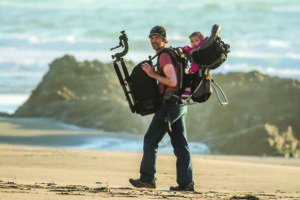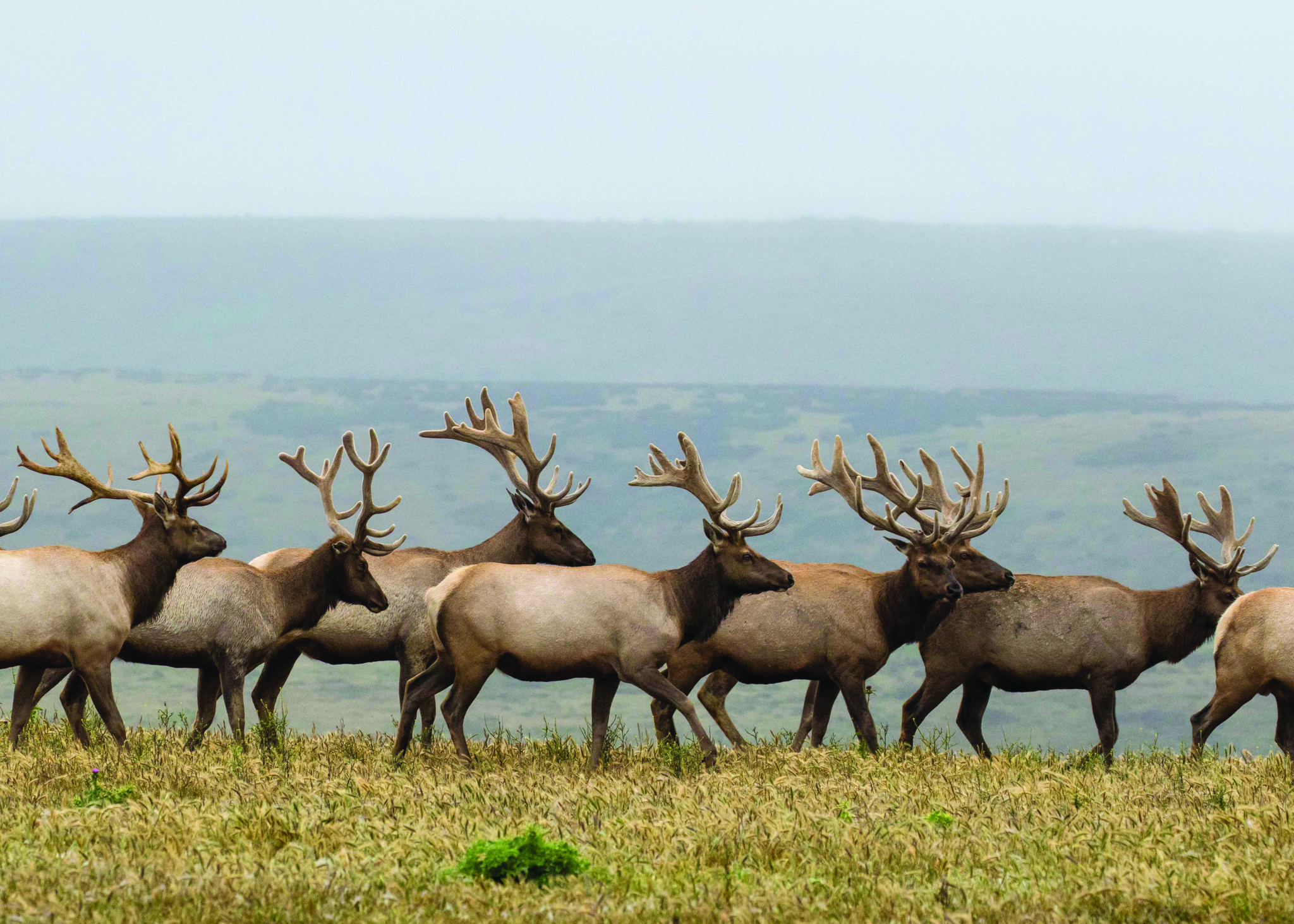By Flora Tsapovsky
Being a resident tourist sometimes takes effort. While gems may be hidden on a neighboring street, or in an unassuming parking lot, sometimes discovering the richness and boldness of your surroundings means driving for a few miles, immersing yourself in nature and, to your own surprise, finding a safari experience—minus the plane ticket to Kenya. Marin County-based professional photographer Daniel Dietrich has made a whole career of it. Born in Buffalo, New York, Dietrich moved to Point Reyes from San Francisco three years ago, and now lives on the coast with his family.
“Photography has always been a passion hobby of mine,” he says. “I developed my first roll of film in the darkroom when I was 13 years old. A camera went with me on every trip I took growing up, but it wasn’t until four years ago that I dropped my high tech industry job to pursue wildlife photography full-time.”
Since moving, Dietrich launched a service under the intriguing name Point Reyes Safaris, offering authentic safari experiences for groups of up to eight people. “Wildlife is my only focus,” Dietrich says, “and I am very fortunate that I don’t have to supplement my income with any other form of photography.”
On a full-day safari, visitors go from sunrise to sunset exploring Point Reyes National Seashore, photographing wildlife and barely stopping for lunch to spot as many animals as possible. Sound too good to be true? We asked Dietrich to tell us more.
Flora Tsapovsky: How did you come up with the safari idea?
Daniel Dietrich: “I have been fascinated with bobcats for years. They are elusive and shy, powerful and regal. As I spent more and more time observing them, I was able to obtain better and better images of them. Being one of the only places in the country where you can find and photograph them with any consistency, I invited a few friends to come shoot with me. With that, the idea to guide to photograph bobcats was born. But it really is the [Point Reyes] National Seashore that makes it all possible. Over 50 percent of North America’s birds have been documented here, as well as 85 species of mammals. It is a highly overlooked park for wildlife, but one that needs to be on any wildlife photographer’s list.”
FT: What kind of animals do you encounter on the safari?
DD: “The animals we encounter really depend on the season and what my guests want to see. The animals we see most often are tule elk, elephant seals, bobcats, coyotes, great horned owls, barn owls, whales, peregrine falcons and so many other birds. We get lucky at times seeing badgers, eagles and long-tailed weasels. I am still waiting to see a mountain lion with one of my guests. Each safari is quite different, which is great. They are wild animals so we never know what we’ll see, but we always see something exciting.”
FT: Have you done safaris in other countries? How is the Point Reyes experience different?
DD: “I am very lucky to have traveled quite a bit. Growing up, I was always saving for a plane ticket instead of saving to buy some material item. I have done quite a few safaris overseas. On these safaris, you cover vast amounts of land in pursuit of viewing wildlife. Point Reyes is quite small in comparison to the likes of a Masai Mara. So we don’t have to cover as much ground to encounter wildlife. And of course the wildlife itself is quite different. Point Reyes is home to many animals not found in any other country.”
FT: What are some of your tips on ethics and safety while on a safari?
DD: “Ethics are of the utmost importance to me. Keeping the safety of the animal first should be at the top of every photographer’s list. Never purposefully flush an animal or bird to get a shot. And never, ever, bait or feed an animal for the purpose of photography. The best tip I can give to anyone photographing wildlife in

Point Reyes National Seashore is, use your binoculars first. Stop and scan. Walk to higher ground and search the hills for wildlife. It is there; you just have to find it. When you do find a bobcat or a coyote, work out the best plan to help you photograph it. Position yourself to where you think you can get a good shot without running after the animal. Patience is the number one thing needed to capture great wildlife images.”
FT: Who typically signs up for these experiences?
DD: “The diversity of people who have joined me on safari has been incredible. I have had guests fly in from overseas specifically to photograph bobcats. I’ve taken out many people who live right here in Point Reyes. I’ve taken out families with kids as young as 2 and retired folks who aren’t getting around like they used to. Since I typically take out very small groups, the itinerary is totally up to my guests, which I think makes it very personal and enjoyable for them.”
FT: Are there any photography pointers specific to West Marin and the Point Reyes area?
DD: “Point Reyes has so many different faces when it comes to weather. This gives incredible diversity to photography. Shooting the tule elk during a cool, foggy morning one day to a red, fiery sunrise the next is really exciting and creates such drastically different images. You always have to be prepared for any kind of weather here, so dress in layers, even in the middle of summer. Bring a variety of lenses with you. It is great to have a long telephoto lens for wildlife, but don’t forget your landscape lens. There is a magical scene around every corner.”
FT: And finally, what can we do to enrich our daily ‘resident tourist’ experience and be more open to our surroundings?
DD: “Point Reyes National Seashore sits within striking distance to millions and millions of people. Yet when I was living in San Francisco, I met an enormous amount of people who had never visited this magical place. We have national parks and public lands all around us here in Northern California. Get out and visit some of them. Connect with these special places that are right at your doorstep. You will be amazed at what a sighting of a whale can do to you, or the feeling you get standing on a sun-drenched cliff at sunset with the wind blowing on your face. There is growing pressure on these special places, and who knows what the future holds for them. By connecting with them, we will be more inclined to protect these national treasures for many years to come.”
Point Reyes Safaris; 303/929-8443; pointreyessafaris.com.











